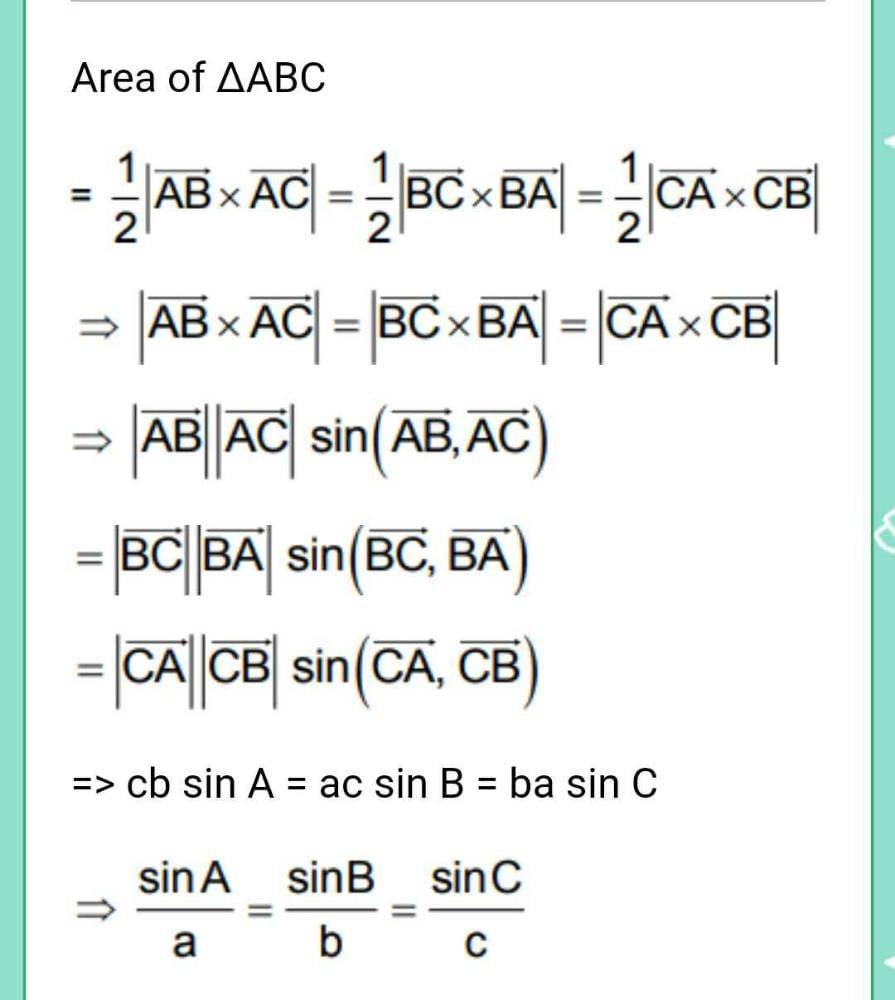Class 11 Exam > Class 11 Questions > In triangle,ABC,prove that a/sinA= b/ sinB= c...
Start Learning for Free
In triangle,ABC,prove that a/sinA= b/ sinB= c/sinC?
Most Upvoted Answer
In triangle,ABC,prove that a/sinA= b/ sinB= c/sinC?
Proof that a/sinA = b/sinB = c/sinC in a Triangle ABC
Introduction
In triangle ABC, we want to prove that a/sinA = b/sinB = c/sinC. This is known as the Law of Sines.
Proof
To prove this, we will use the following steps:
Step 1: Draw the triangle ABC
We start by drawing the triangle ABC, with sides a, b, and c opposite to angles A, B, and C, respectively.
Step 2: Draw the altitude BD from B to AC
Next, we draw the altitude BD from vertex B to side AC.
Step 3: Label the angles and sides
We label the angles and sides as shown in the diagram below:

Step 4: Use the definition of sine
Using the definition of sine, we have:
sin A = opposite/hypotenuse = BD/c
sin B = opposite/hypotenuse = BD/a
sin C = opposite/hypotenuse = AD/b
Step 5: Use the properties of similar triangles
Triangles ABD and ABC are similar, so we have:
BD/AB = AD/BC
BD/a = AD/c
BD = ac/sqrt(a^2 + c^2)
Substituting this value of BD into the expressions for sin A and sin B, we get:
sin A = ac/sqrt(a^2 + c^2) / c = a/sqrt(a^2 + c^2)
sin B = ac/sqrt(a^2 + c^2) / a = c/sqrt(a^2 + c^2)
Similarly, using the similarity of triangles BCD and ABC, we can show that:
sin C = b/sqrt(b^2 + c^2)
Step 6: Simplify
We can now simplify the expression a/sin A as follows:
a/sin A = a/(a/sqrt(a^2 + c^2)) = sqrt(a^2 + c^2)
Similarly, we can simplify b/sin B and c/sin C as:
b/sin B = b/(c/sqrt(a^2 + c^2)) = sqrt(b^2 + c^2)
c/sin C = c/(b/sqrt(b^2 + c^2)) = sqrt(a^2 + b^2)
Step 7: Conclusion
Therefore, we have shown that a/sin A = b/sin B = c/sin C, which is the Law of Sines.
Conclusion
In conclusion, the Law of Sines states that in any triangle, the ratio of the length of a side to the sine of the angle opposite to that side is constant for all three sides. This can be proven using the properties of similar triangles and the definition of sine.
Community Answer
In triangle,ABC,prove that a/sinA= b/ sinB= c/sinC?


|
Explore Courses for Class 11 exam
|

|
Question Description
In triangle,ABC,prove that a/sinA= b/ sinB= c/sinC? for Class 11 2025 is part of Class 11 preparation. The Question and answers have been prepared according to the Class 11 exam syllabus. Information about In triangle,ABC,prove that a/sinA= b/ sinB= c/sinC? covers all topics & solutions for Class 11 2025 Exam. Find important definitions, questions, meanings, examples, exercises and tests below for In triangle,ABC,prove that a/sinA= b/ sinB= c/sinC?.
In triangle,ABC,prove that a/sinA= b/ sinB= c/sinC? for Class 11 2025 is part of Class 11 preparation. The Question and answers have been prepared according to the Class 11 exam syllabus. Information about In triangle,ABC,prove that a/sinA= b/ sinB= c/sinC? covers all topics & solutions for Class 11 2025 Exam. Find important definitions, questions, meanings, examples, exercises and tests below for In triangle,ABC,prove that a/sinA= b/ sinB= c/sinC?.
Solutions for In triangle,ABC,prove that a/sinA= b/ sinB= c/sinC? in English & in Hindi are available as part of our courses for Class 11.
Download more important topics, notes, lectures and mock test series for Class 11 Exam by signing up for free.
Here you can find the meaning of In triangle,ABC,prove that a/sinA= b/ sinB= c/sinC? defined & explained in the simplest way possible. Besides giving the explanation of
In triangle,ABC,prove that a/sinA= b/ sinB= c/sinC?, a detailed solution for In triangle,ABC,prove that a/sinA= b/ sinB= c/sinC? has been provided alongside types of In triangle,ABC,prove that a/sinA= b/ sinB= c/sinC? theory, EduRev gives you an
ample number of questions to practice In triangle,ABC,prove that a/sinA= b/ sinB= c/sinC? tests, examples and also practice Class 11 tests.

|
Explore Courses for Class 11 exam
|

|
Signup for Free!
Signup to see your scores go up within 7 days! Learn & Practice with 1000+ FREE Notes, Videos & Tests.



















